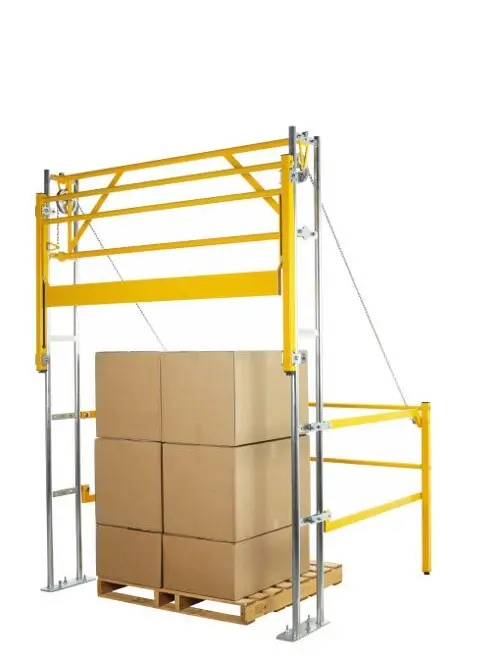
A safe working environment is important in sectors where work is done at height, such as warehouses and industrial environments.
Safety fencing – including balustrades, mezzanine fencing and warehouse fencing – and up-and-over barriers are crucial components of an effective fall protection system.
But what safety guidelines do these fencing systems need to meet?
To minimize the risk of falls and prevent accidents, every type of safety fencing must meet strict standards.
The most important European standards that apply here are:
When a safety fence is designed and installed according to these standards, it can withstand daily loads and unexpected forces such as tripping or leaning.
This not only ensures the safety of personnel, but also the integrity of goods and installations.
Pallet gates, such as the Variogate systems, are often used at loading points such as mezzanine floors, loading docks or work platforms.
They are designed to provide safe passage without the risk of falling.
However, these gates are not always subject to the same strict requirements as safety fencing, which can lead to dangerous situations.
High-quality pallet gates not only comply with EN 14122-3 and EN 13374, but also with additional standards such as:
A common problem in industrial environments is the use of uncertified or defective fencing.
These give the appearance of security, but in reality do not meet the standard.
This is also called false security.
A non-standard pallet gate can collapse under load, not close properly or provide insufficient protection in the event of unexpected movements. The result: serious accidents, injuries or damage to goods.
That is why it is crucial that pallet gates also meet the same requirements as safety fences, including balustrades and mezzanine fencing. Only then will the protection be truly effective and sustainable.
Whether it is a safety fence on a mezzanine floor, a balustrade along a work platform or a pallet gate at a loading zone – only certified products that comply with the applicable safety guidelines offer real protection.
When purchasing and installing fall protection, always be guided by standards such as EN 14122-3, EN 13374 and the additional certifications. This way you prevent false security and invest in real security for personnel and goods.
Contact a certified supplier and ensure your workplace complies with all safety guidelines.
Yes, a pallet gate used as fall protection at height, such as on a mezzanine floor or loading dock, must comply with the EN 14122-3 standard.
This standard sets requirements for the minimum height, strength and stability of fixed fences to prevent the risk of falling.
A balustrade is a type of safety fencing usually used along the edges of platforms, balconies or stairs.
Safety fencing is a broader term and also includes fencing for industrial applications, such as mezzanine fencing or warehouse fencing, which are specifically designed for fall protection in work environments.
The most important standards are EN 14122-3 for fixed fencing and EN 13374 for temporary edge protection.
For specific situations, EN 1090-1 (structural safety) and NEN 6702 (loads and durability) may also apply.
False security occurs when a fence or gate appears to meet safety standards, but in reality does not provide the correct strength, height or stability.
This can lead to serious accidents. Only certified pallet gates offer real safety.